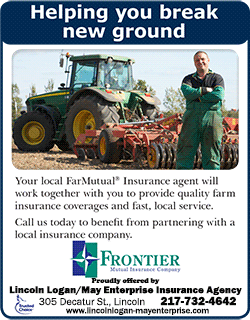|
 The red maples are among the most severely injured trees by the
leafhopper. Other trees affected include oaks, other maples, red
mulberry, red bud, cottonwood, birch, apple, dogwood, hawthorn,
euonymus, black locust, and cherry. Infection most likely began
in May and June, and the effects are now visible. The red maples are among the most severely injured trees by the
leafhopper. Other trees affected include oaks, other maples, red
mulberry, red bud, cottonwood, birch, apple, dogwood, hawthorn,
euonymus, black locust, and cherry. Infection most likely began
in May and June, and the effects are now visible.
The leafhopper is a small wedge-shaped insect, which is light
green. Their length is about an eighth of an inch, and they are
attracted to light at night. At times of very large numbers,
they look like a fog around outdoor lights. Young leafhoppers
look like the adults, but they can’t fly. They suck plant sap,
then inject a toxin back into the plant leaf. They feed at
“points” on leaves, meaning the tips or the lobes. That is where
you find the damage beginning.
Damage appears as curled, stunted, mottling, and in the case of
red maples in particular, the red coloration is the standout
part of the damage. Other discoloration can also appear with
lighter leaf areas or brown or black areas. There is often a “v”
shaped area at the point of feeding with it progressing from
yellow, brown, then black, then tattered out by wind and rain.

Treatment is probably only justified on young and nursery stock,
and at this time of year, the damage has mostly been done. It
would have taken preventative insecticide sprays much earlier in
the season to prevent the damage we are now seeing.
The Fall To-Do List
It seems like fall is sneaking up on us. It’s been a highly
variable summer, but the weather is changing. It is easiest to
notice the evenings are much shorter, and we have less time to
do the things we need to do in the fall. Following is a list of
things to get into your schedule over the next few weeks, and in
some cases not to do.
Do a good job of raking up old fruit from under trees. This old
fruit harbors many diseases and insects that could cause you
problems for next year, if allowed to lie under the tree. Don't
stop with the ground clean up, but also remove mummified fruit
and small fruit from the trees and dispose of it in another
location.
We are rapidly approaching the “breaking point” for the
recommended time to seed grass seed. If you want to try it
later, you may have excellent luck or have no luck at all. Fall
seedings should be done by September 10 or so. The next
recommended seeding time is mid March to the 1st of April.
Figure on about two pounds of seed per 1000 square feet of lawn
for an overseeding, and four pounds per 1000 square feet for a
newly tilled area. Hopefully the temperature and moisture
situation will be more favorable than it has been earlier.
[to top of second column] |

Now is a great time to go after those broadleaf weeds in the
lawn. Make sure that you select the correct product, use the
proper amount, and do not treat areas containing fall seeded
grass. The rule of thumb is that you need to mow newly seeded
grass at least 3 times before treating that area for broadleaf
weeds. This means you don’t try and do both in the same fall or
spring seeding season. Broadleaf weeds that are perennial are
sending large amounts of material to the roots to enable them to
come up again next year, and translocated herbicides will be
sent to the roots as well. Be warned this also means perennials,
such as flowers and shrubs, are in the same boat. If you seeded
grass recently, skip the weed control this fall.
Pruning chores for plants with a high sap flow should be done in
December, while other pruning chores are best done in early
February for deciduous plants, and in June for evergreens.
Flowering shrubs are best done after they flower to preserve
flower buds for the following year. Pruning now frequently leads
to more damage to plants.
Plan for next year’s garden planting scheme now. It wouldn’t
hurt a bit to apply some lawn and garden limestone to the entire
area, especially those where you will have tomatoes, green
beans, and peas. The only areas to not put lime on are areas
where acid-loving crops, such as blueberries, will be. Assuming
you are applying about a pound of nitrogen per 1000 square feet,
apply about 4.25 pounds of lime to the same area. This rate
would also be appropriate for lawns.
[By JOHN FULTON, COUNTY EXTENSION
DIRECTOR SERVING LOGAN, MENARD, AND SANGAMON COUNTIES]

 |